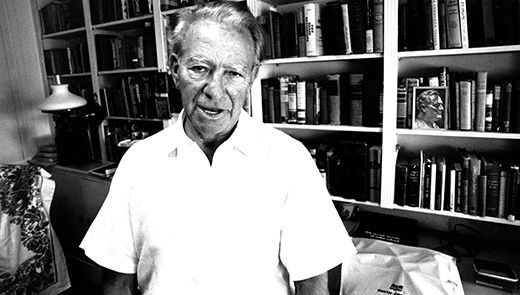
As the Thanksgiving holiday approaches families across the country will gather around the television and watch one of America’s beloved films, “The Wizard of Oz.” However there is much to be told about the message of this classic, beginning with its Oscar-winning lyricist Edgar Yipsel Harburg.
In the 1930s, Harburg wrote the hit songs for the film, and added the famous rainbow to the story, which was originally written by L. Frank Baum in 1900.
Harburg co-wrote the tune “Over the Rainbow” with Harold Arlen for the film, which won the Academy Award in 1940. He was also the final script editor and made significant contributions to the dialogue.
But less well known is that “Yip” Harburg was a socialist, and was blacklisted during the McCarthy period.
Harburg was born on April 8, 1896, of Russian-Jewish immigrant parents. He was raised in poverty on Manhattan’s Lower East Side. In high school, he was seated alphabetically next to Ira Gershwin, and the two began a friendship that lasted a lifetime, helping to shape 20th century American song and culture.
Harburg’s nickname “Yip” derives from “Yipsel.” He was called “Yipsel” because that is how people pronounced “YPSL” – the acronym for the Young People’s Socialist League of which Harburg was a member.
Harburg spent three years in Uruguay to avoid involvement in World War I, which he opposed as a committed socialist. After the war he returned to New York, married and had two children.
He became a master lyricist, poet and book-writer who understood the struggles of working people and dedicated his life to social justice and fighting against poverty. Many recall Harburg as Broadway’s social conscience.
In 1929 Harburg wrote, “Brother, Can You Spare a Dime,” the song that captured the essence of the Great Depression and the reality of millions struggling to get by. The song became a national hit and remains an anthem for difficult times, and anger at corporate greed.
The lyrics represented the sentiments of working people: “Once I built a railroad, I made it run, made it race against time. Once I built a railroad; now it’s done. Brother, can you spare a dime?”
Writer Phillip Bonosky, who was cultural editor of this newspaper’s predecessor, the Daily Worker, says “The Wizard of Oz” was based on the atmosphere of the times.
“The book was written by a socialist and the fable highlights some of society’s contradictions of that period,” Bonosky, 93, said in a phone interview. “The Wizard of Oz” was in many ways a metaphor for what was happening in reality, he said.
In a 2006 interview with Amy Goodman on “Democracy Now,” Harburg’s son Ernie Harburg said “Wizard of Oz” was about common people confronting and defeating seemingly insurmountable and violent oppression. The Scarecrow represented farmers, the Tin Man stood for factory workers, and the Munchkins of the “Lollipop Guild” were the union members, he said. There was at least 30 percent unemployment at those times, Ernie Harburg recalled. Among African Americans and minorities it was 50-60 percent, he said.
Goodman said, “While academic debate persists over whether Baum intended the story as a political allegory about the rise of industrial monopolists like John D. Rockefeller and the subsequent populist backlash, there is no doubt that Harburg’s influence made the 1939 film version more political.”
Bonosky said “Wizard of Oz” offers an alternative history of that period. “It’s kind of like an unknown part of our history,” he said. “It’s a very profound part of the American past and its messages could really educate younger generations.”
Harburg went on to write “Finian’s Rainbow” for Broadway. The musical is now having a successful revival there. It addresses themes that are highly topical today, racial bigotry, anti-immigrant prejudice and mortgage foreclosures. In 1947 the musical was the first Broadway show with an integrated cast. It became a hit and ran for a year and half. The musical had three major revivals (1955, 1960 and 1967), and was also made into a film starring Fred Astaire and Petula Clark, directed by Francis Ford Coppola, in 1968.
During the McCarthy period, Harburg was a victim of the Hollywood blacklist when movie studio bosses blacklisted industry people for suspected involvement or sympathy with the Communist Party USA. Harburg was banned from TV and film work from 1951 to 1962.
During this period, ironically, CBS broadcast “The Wizard of Oz” on television and it broke all viewership records. It has been airing ever since, gaining global popularity.
Altogether Harburg wrote the lyrics to over 600 songs with a variety of composers. Many of his songs have expressed the universal hope for change and a better life for working people in hard times. Those messages have renewed resonance today in the midst of the greatest financial collapse since the Great Depression.
Harburg was inducted into the Songwriters Hall of Fame in 1972. In 2005, the United States Postal Service issued a commemorative stamp recognizing his accomplishments. He died in 1981 at age 84.
Photo: E.Y. “Yip” Harburg, in a 1977 photo. (AP/stf)


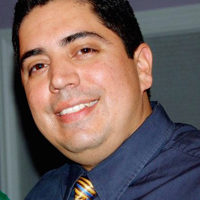
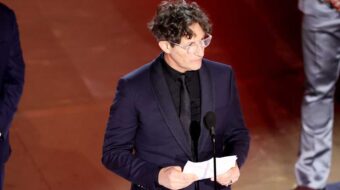
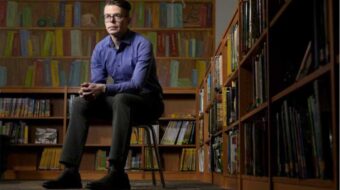
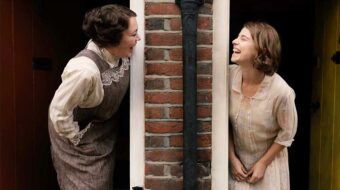






Comments